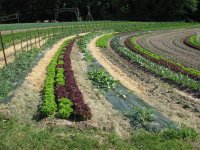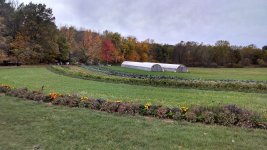Guildenrose
New member
I am a blank slate; I know nothing about using a tractor, or farming. Nevertheless, I intend to "hobby farm" in retirement. We are terracing a 30% grade (very steep), and the hill is convex; our retaining walls will give us about 20 feet of width in each flat terrace; we will have a total of five of these flat terraces; they will vary in length from about one hundred to one hundred and fifty feet. This will render up to 15,000 square feet of planting area; however, because this hill juts out, it forces a natural curve in these five terrace rows; that is, we cannot make our rows a continuous straight line because of the configuration of the plain. HERE IS MY QUESTION:
USING A COMPACT TRACTOR (We plan to buy a Kubota L3800 and all needed implements), can you plant and cultivate on a curve, that is an arc? Is that possible? If it is possible, how is it done?
I have declared to my partner that this is not possible and cannot be done, because a tractor can be used to plant and cultivate only in straight lines; but my lack of knowledge and experience really makes me unqualified to say. Can someone help me?
Thanks.
USING A COMPACT TRACTOR (We plan to buy a Kubota L3800 and all needed implements), can you plant and cultivate on a curve, that is an arc? Is that possible? If it is possible, how is it done?
I have declared to my partner that this is not possible and cannot be done, because a tractor can be used to plant and cultivate only in straight lines; but my lack of knowledge and experience really makes me unqualified to say. Can someone help me?
Thanks.

